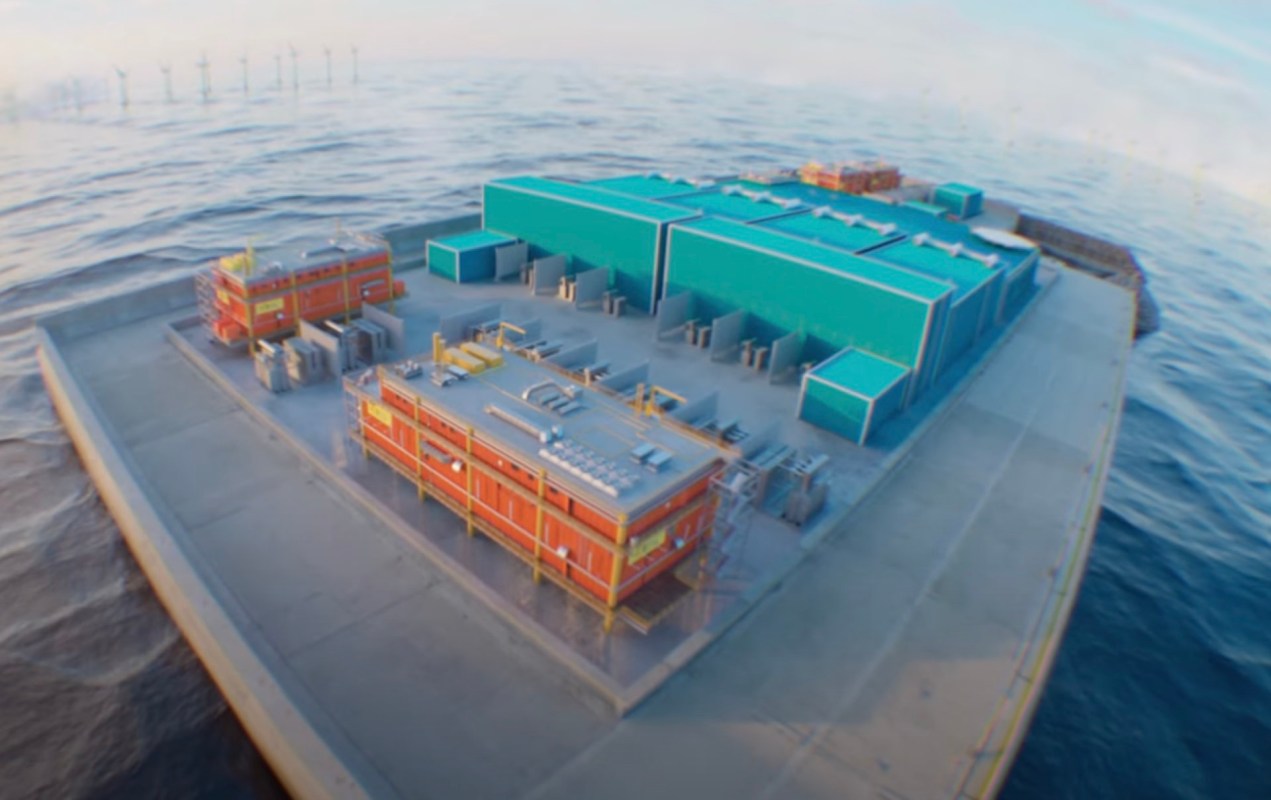Belgium is moving ahead with plans to build what its planners are calling the "world's first artificial energy island" — a floating energy grid located in the North Sea 28 miles off the Belgian coast. It will connect offshore wind farms to Belgium's mainland and to other European countries, Electrek reported.
Named Princess Elisabeth Island, the project is being developed by Belgian electricity transmission system operator Elia, which describes the project on its official website as "an electricity hub where cables from both the 2nd offshore wind zone (Princess Elisabeth Zone) and future interconnectors with other European countries such as the United Kingdom and Denmark will arrive."
Elia has already gotten environmental approval from the Belgian government for Princess Elisabeth Island. The next step is to begin construction, which the company said will take just over two years. The project is expected to be completed in August 2026, per Electrek.
The artificial island will receive power from wind turbines in the Princess Elisabeth Zone via undersea cables, convert it into high-voltage electricity, and distribute it to the Belgian mainland, the UK, and Denmark.
"The Belgian North Sea will act as a giant power hub, helping the EU reach its goal of 300 gigawatts of offshore wind capacity by 2050," the narrator of a promotional video released by Elia explained. "The island will be the world's first international energy hub."
Tomorrow's World Today reported that Tinne Van der Straeten, Belgium's Minister of Energy, said, "Belgium has been a pioneer in offshore wind power for 15 years and is once again demonstrating its expertise today through its first energy island … We are giving our Belgian companies another chance to be true pioneers, both here and abroad."
According to Wind Europe, Europe installed 19 gigawatts (GW) of new wind capacity in 2022, "significantly less [than] what the EU should be building to be on track to deliver its 2030 Climate and Energy goals."
The outlet reported that 87% of those installations were onshore — meaning that the continent has a lot of work to do to meet its goal of 300 GW of offshore wind capacity by 2050 (according to Time), though, of course, setting a target date of 27 years in the future gives them plenty of time to accomplish it.
The United States, meanwhile, has set a far smaller goal of 30 GW of offshore wind capacity by 2030. Offshore wind farm development in the U.S. does face some bigger hurdles than it does in Europe, including opposition from misinformation campaigns backed by the dirty energy industry.
Join our free newsletter for weekly updates on the coolest innovations improving our lives and saving our planet.









